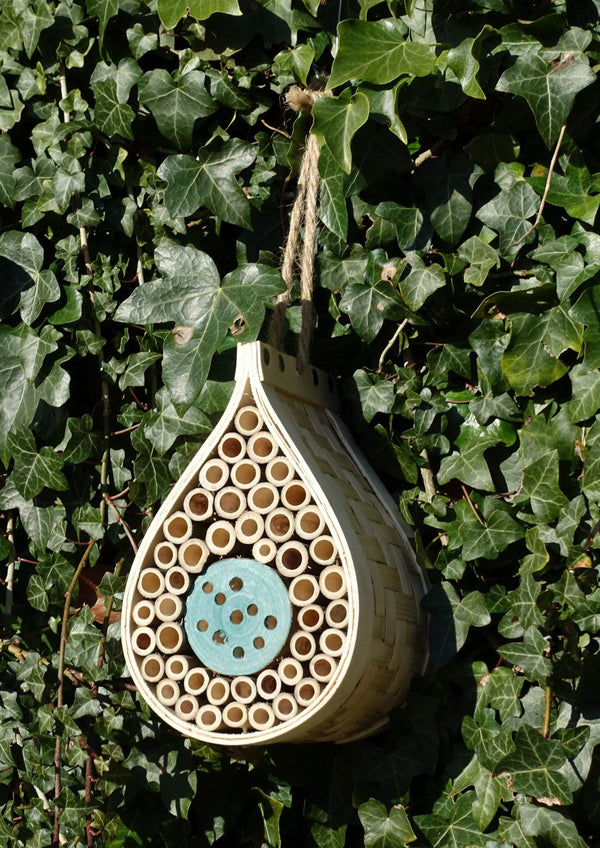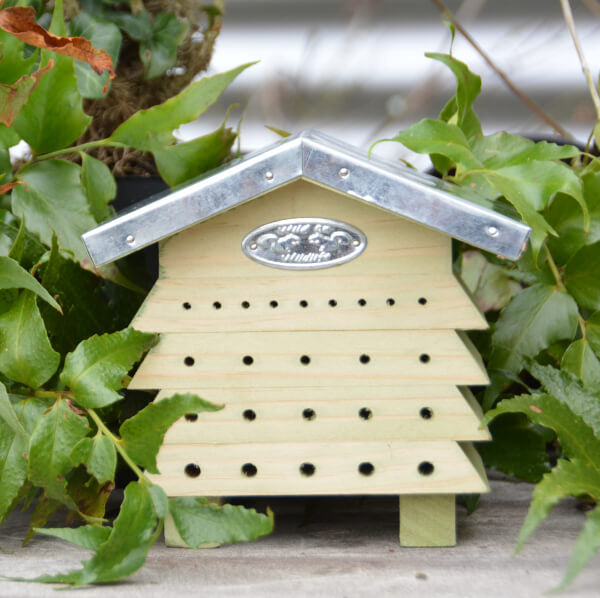The Importance Of Insects In Our Ecosystem
Insects are hugely important to our ecosystem! Amongst other things, Insects pollinate plants, cycle nutrients, maintain soil, provide a food source to other animals, and control populations of organisms. While they can definitely be irritating and a bit gross, we couldn’t survive without insects! In this article, we will be looking at all the different ways insects contribute to our ecosystem. You’ll be surprised how much we rely on them. They may be small but they are oh so mighty. Read on to find out more…
Pollination
Pollination is the transfer of pollen from the male anther, to the female stigma of the plant. The transportation of pollen grains enables the process of fertilisation and the reproduction of the plant. The wind can pollinate plants by carrying seeds from one place to another. However, the wind can be a little sporadic. insects are the most rigorous and meticulous when it comes to pollination.
Pollination is very important to our ecosystem. Pollination is an essential ecological survival function. Without pollination, plants would be unable to grow and reproduce. Without pollination, human life would be unable to survive on planet earth. The importance of pollination cannot be understated. 80% of our food is pollinated by insects.

Insects are so good at pollination because they can easily fly from flower to flower. Pollen sticks to the insect’s body and legs. Once the pollen is secure, the insect zooms to neighbouring plants and transfers the pollen into the female organs. Insects are attracted to the sugary substance many plants produce. This means they know exactly where and how to find the delicious pollen.
Unfortunately, climate change has caused a dramatic decline in pollinator populations. Bees are particularly vulnerable to climate change. As our most important pollinator, the possible extinction of bees is extraordinarily scary. To put it bluntly, humans cannot survive without bees, nor can planet earth. Bees pollinate around $30 billion (USD) worth of crops. After the extinction of bees, humans would have to migrate en masse from the office to farms to pollinate food and flowers. Hand pollination is feasible, however, it is extremely time consuming and labour intensive (pollen is approximately .000039 inches). We do not have the same natural skills or expertise as bees.
If you ever see a tiny little bee dying on the footpath, help it out! Gently transport it to the nearest flower and feed it some sugary water. Bees need all the help they can get! We can also help bees by mitigating and reversing the effects of climate change. Our pollinators - and our survival - depend on it.
Another way of supporting bees in your garden are buy looking at bee hotels to help them!

Cycle Nutrients
The nutrient cycle is the transfer of matter and energy between living organisms. Essentially, animals and insects consume nutrients from soil, land, or food. This matter is released back into the environment through death, decomposition, or digestion. The nutrient cycle is nature's recycling system. It is absolutely imperative to our ecosystem. Organic material is consistently repurposed and reused. This is key to a thriving ecosystem. I
Insects play several key roles in the nutrient cycle. Firstly, insects of all shapes and sizes digest organic material and deposit it throughout the ecosystem. Insects are also eaten by larger animals. Birds, bats, fish, frogs, and spiders all feast on insects. Fellow insects like ladybugs, beetles, wasps, and ants eat insects as well. Insects are an invaluable food source for the entire ecosystem. Once the insects have been eaten, the nutrients from their organic matter is sent back into the ecosystem. Finally, insects dig and digest compost (and other organic waste) and turn it into healthy soil. The soil that is created by insects is often recycled back into the crops we eat.

Maintain Soil
Arthropods are insects that maintain soil structure. Arthropods include lobsters, crabs, spiders, mites, insects, centipedes, and millipedes. Arthropods burrow in the land and create soil aeration. Aeration is when the insect pierces tiny holes in the soil. These holes allow air, water, and nutrients to get inside the roots of grass and other plants. Without aeration caused by insect burrows, plants would be unable to grow.
Source of Food
So many animals snack on insects! Without insects, thousands of animal species would go hungry. As we’ve already covered, british garden birds, bats, fish, frogs, spiders, and lizards feast on insects. Larger land mammals like armadillos, anteaters, moles, and aardvarks are all insectivores. Additionally, some insect species eat their insect cousins. At some point or another, all living beings have consumed an insect! It’s slowly becoming more mainstream for humans to eat high protein insects like grasshoppers and crickets. Insects may be the future of food! They are far more environmentally friendly to produce than farm animals. You’ll have to start getting used to snacking on insects. You might even get a taste for the deliciously chewy texture and the nutty flavour.

Control Organism Population
Predatory insects control populations of pesky organisms. These are the kind of insects you want to seduce into your garden because they are so handy to have around! Predatory insects hunt and eat other insects. As a result, they control and manage the population of the organism. Population control is important because it keeps the ecosystem balanced. Excessive populations of insects cause problems for the ecosystem.
Spiders, ladybugs, ground beetles, larva, and wasps are all predatory insects you want in your garden! Spiders eat more insects than birds! Ladybugs are notorious for eating aphids. Aphids are little sap-sucking insects that are commonly found on vegetable plants. Aphids weaken and destroy plants by removing the sap. Ladybugs eat around 5,000 aphids in their lifetime and can easily remove them from your garden! Ground beetles are gardener's friends as they love eating snails and slugs.

Insects can also be used for biological control. This is a little different to natural population control, however, it is underscored by the same basic idea. Biological pest control uses predatory, pathogens, and parasites to eliminate or reduce the existence of a population. Biological pest control requires human management and strategy. On the other hand, population control by insects happens far more naturally. Purchasing ladybugs from the garden shop and artificially placing them in your garden to eliminate aphids is biological pest control. Whereas, finding ladybugs in your garden one morning chewing on some aphids is natural organism population control.
Disperse Seeds
Bugs, moths, beetles, weevils, wasps, and thrips all feed on seeds. Ants are actually the most productive at seed dispersal. While the insects are munching on the plant seeds, the seeds are dispersed from the plant into the ecosystem. Alternatively, seeds stick to the body or legs of the insect (just like pollen) and are carried across great distances as the insect flies, or crawls, away. This accidental form of seed dispersal is very important! It allows plants to grow across the ecosystem.
Seed dispersal by insects has about 4 key benefits. First, seed dispersal reduces competition between parents and their offspring. Tiny seeds can often fail to grow when their parents hog the resources. Secondly, moving seeds reduces the likelihood of predators eating or destroying the seeds. Thirdly, seed dispersal can lead to more favourable environmental conditions for seeds. Ants will often move seeds from above ground to below ground. Because of this, seeds can be protected by harsh weather. Finally, ants offer the seed more favourable conditions for growth when they transport it to their nest. The soil in ant nests is often higher in nutrients and far safer.

How are Insects so Successful?
Insects are the most successful group of living organisms in the history of the earth. Insects make up around 75% of living creatures on earth. Insects are so successful because they have exceptionally powerful extraskeletal, they can fly, and they are small. These factors all contribute to a super quick, mobile and powerful little creature. Insects can escape predators with ease, can access the nooks and crannies of plants effectively, and can travel long distances to new environments. Insects may be small, but they are very mighty!
Insects are also able to colonise a diverse area rapidly and without much struggle. The survival potential of insects is significantly higher than other animals, as they can adapt to hot and cold temperatures. Insects can survive in harsh environments for longer periods. They have impressive genetic diversity, and they can adapt to almost any environment.
Insects have evolved to grow wings and legs which means they can crawl, swim, fly, run, and dig. Their strong mobility is a key contributor to their enduring success. Finally, insects are very efficient when it comes to reproduction. Insects are oviparous, which means the female lays eggs. In one lifetime, the average female insect lays up to 200,000 eggs. Some insects are even asexual which means the female egg does not need to be fertilised by the sperm.
Insects are so successful because they are highly adaptable and have evolved exceptionally well. Now, they are tiny powerhouses. They truly are amazing things! Next time you spot one crawling along the pavement, or flying through your garden, stop to appreciate their awesomeness!










